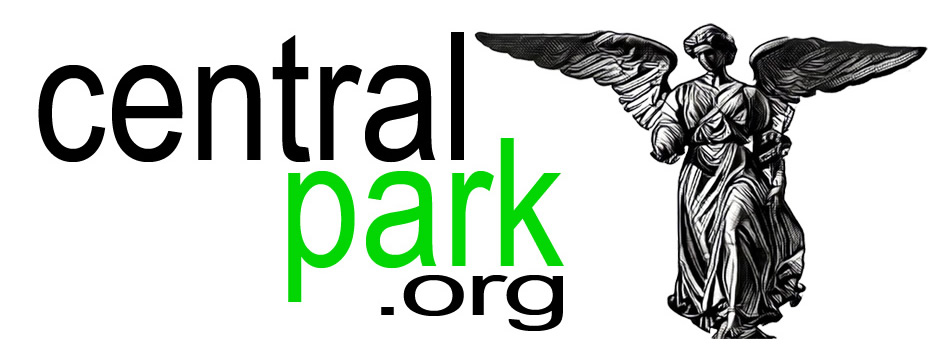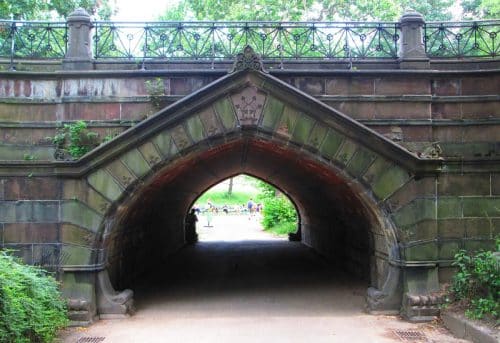Greywacke Arch
Greywacke Arch, just south of the Obelisk, allows pedestrians to reach the Great Lawn by crossing under East Drive via a path beginning at 79th Street and Fifth Avenue, south of the Metropolitan Museum. Construction began in 1861; the Commissioners’ Sixth Annual Report noted the bridge completed by 1862, except for its distinctive railing. Thirteen of the original drawings remain, all by the hand of Jacob Wrey Mould. The pointed Saracenic arch bears the unmistakable Moorish overtones arising from Mould’s work with Owen Jones in drawing the Alhambra in Spain. At the arch’s base the footing curves into volutes. Mould’s talent, teamed with Vaux, gives Central Park a special dimension distinguishing it among great parks.
Gray sandstone and North River greywacke from the Hudson Valley alternate with brownstone from the banks of the Passaic in New Jersey. The surface of the greywacke is tooled, that of the brownstone bush hammered. The earthy gray and brown colors form a contrasting, decorative pattern that accents the horseshoe contours of the arch and the brownstone-incised molding above. The pointed ornamental sculpture is featured on both elevations. The iron railing is in an abstract pattern. The underpass vault is in red brick with white brick inserts. Abutments are fully covered. The span is 11 feet 3 inches high at its apex, and 18 feet 3 inches between abutments, while the passage underneath is 56 feet long. Greywacke was restored in 1983-85.


